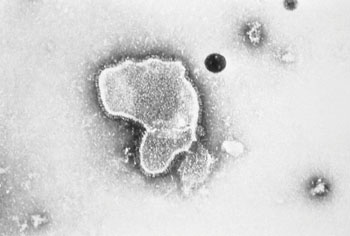Genetic Trigger Found for RSV-Induced Infant Hospitalizations
By LabMedica International staff writers
Posted on 21 Apr 2014
A viral protein has been pinpointed that plays a major role in making respiratory syncytial virus (RSV) the most common cause of hospitalization in children under one year of age. Posted on 21 Apr 2014
The discovery is the first step toward identifying better diagnostics and potential treatments for an infection that strikes nearly all children before they reach the age of three and causing severe disease in 3% of infected children.
Scientists at the University of North Carolina (Chapel Hill, NC, USA) and colleagues from other institutions used both a hamster model and lung tissue obtained from infants with complete DiGeorge Syndrome naturally infected by RSV. RSV and cytokeratin 8/18 immunoreactivity was performed on histological sections using a Leica Bond-III automated stainers (Leica Microsystems Inc.; Buffalo Grove, IL, USA).
The scientists found that the virus expresses a specific RSV-encoded nonstructural protein, or NS2, in epithelial cells, causing the cells to shed from the airway lining and into the airway lumen. This leads to obstruction of airflow in the small airways and overwhelming inflammation. While the parainfluenza virus (PIV)-infected epithelial cells retained their natural elongated, columnar shape, the same cells infected with RSV balled up and puffed out of the airway epithelium, causing the infected cells to accumulate in the lumen of the airway.
The scientists are now on the trail of a human biomarker that would tell doctors if an RSV-infected infant is at greater risk of developing severe lung disease. A biomarker would be the key in the development of a needed diagnostic tool and would aid clinical trials that aim to develop anti-RSV therapeutics. RSV infection leads to the hospitalization of between 75,000 and 125,000 babies under one year of age in the USA every year. Globally, RSV is the second-leading cause of infant mortality due to infectious disease behind only malaria.
Raymond Pickles, PhD, associate professor of microbiology and immunology and senior author of the study said, “If we can find biomarkers informing us that the most vulnerable parts of the lung have already been infected by RSV, then it could be possible to identify much more quickly the children at more risk for developing severe lung disease and to get those babies in a treatment protocol at an earlier time.” The study was published on April 8, 2014, in the Journal of Clinical Investigation.
Related Links:
University of North Carolina
Leica Microsystems Inc.












 (3) (1).png)


